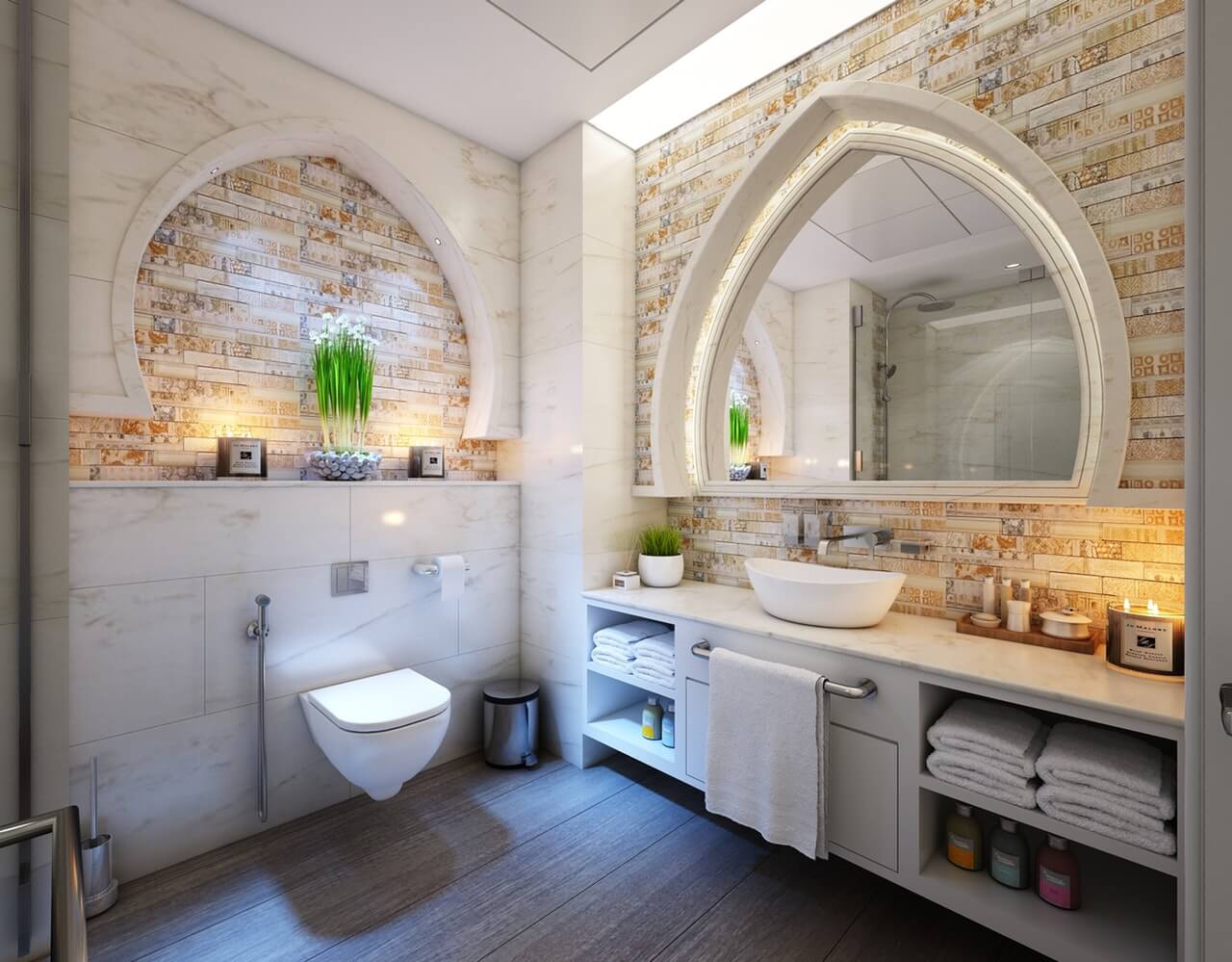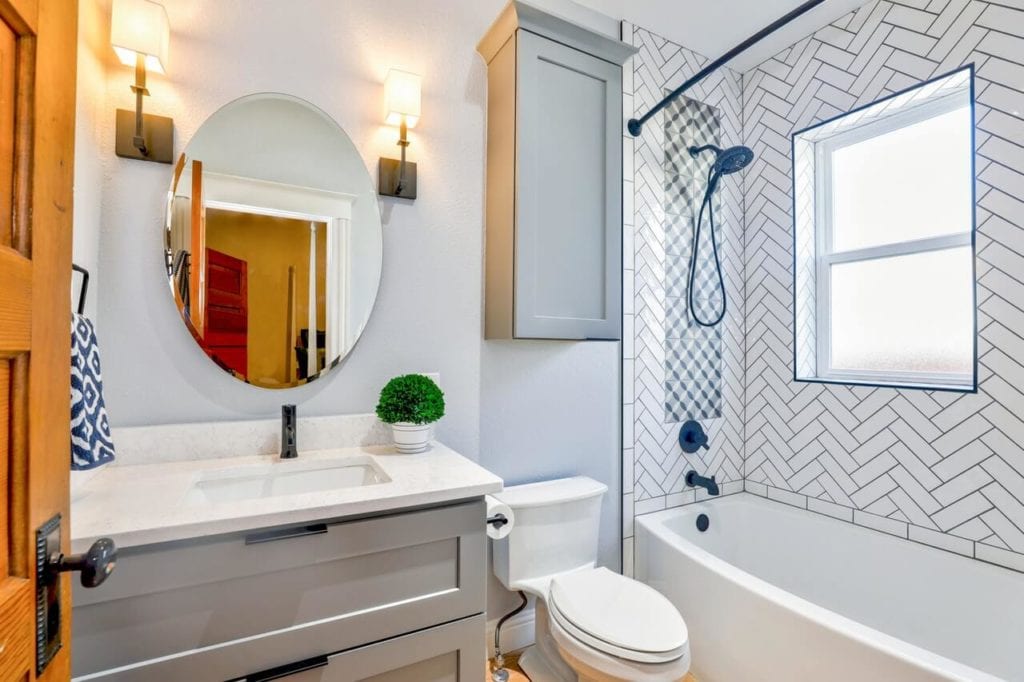
House Cleaning Tips you should try: How To Clean Residue Buildup From Toilets (with 4 home methods)
Table of Contents
Let’s face it. We spend a lot of time in our toilets, voluntarily or not. The last thing you want to see when you get in to tend to your needs is the ugly sight of a dirty looking toilet bowl. Let’s make your toilet time as relaxing as it could possibly be. Keep toilets clean should be a very important part of your house cleaning program.
Why does residue buildup occur?
First things first, let’s talk about how to clean residue buildup in your toilet bowl and how it comes into existence. You see the white or rust colored build up on the sides of your toilet bowl? This is as a result as all the minerals that are in your water supply.
Most of the time, these minerals are calcium and magnesium. Most of the time, the water that contains these minerals causes no real damage to your plumbing. But the more there is mineral buildup, the more disgusting your toilet bowl will look. Also, when there is a large buildup of these minerals, they actually get settled in your pipes. So maybe the recent clogging when you flush is a result of these minerals.
But this doesn’t mean that when these happen (disgusting toilet bowl and clogging) you should just throw the whole plumbing system away—let’s be realistic, most of us aren’t that rich. And that is why we are going to talk about affordable and durable solutions that are going to keep your toilet as healthy as possible—and for the longest time possible as part of your house cleaning program and regular cleaning tasks.

4 Home made methods to clean residue buildup
As part of your own house cleaning program here are 4 home made methods you may use to clean residue buildup off your toilets:
Close Off Water Supply
Before making use of any of these methods, what you should do is close off your water supply. Flush the water so that you can see the calcification clearly. If this doesn’t work, you could use a plunger until you expose all of the residue buildup. You will have several options after you do this.
1. Use of natural acids: Lemon & Vinegar
Natural acids like vinegar or lemon juice work well against calcium or magnesium buildups. You can use them in diverse ways. The most popular (and effective) method is to fill up a spray bottle with either vinegar or lemon juice. Then you spray at the calcification as much as you possibly want to. Make sure to leave the vinegar or lemon juice on the buildup residue for about 30 minutes.
After this, you can move on to the scrubbing. (Make sure to put on gloves) You could choose to use sandpaper or a bristled brush. With the instrument of your choice, you can now scrub at your calcification. This should do the trick.
2. Baking Soda
If the previous method doesn’t work, there are other things you could do. Our second option would be to use baking soda. This is very effective when it comes to cleaning up buildups. To use baking soda against buildups, what you should do is pour baking soda on your toilet brush.
Then use the brush to scrub at the residue buildup. If this works and the residue disappears, all you have to do is flush so as to get rid of excess product. If it doesn’t work, then you can try another method.
3. Pumice Stone (a must have for any house cleaning program)
The next alternative to clean residue buildup in your toilet is to use a pumice stone. A pumice stone is a volcanic rock used to scrub at dry and affected areas. Use the pumice stone to rub at all the areas that are affected by residue buildup.
This might take some time but it is really effective. Make sure to be gentle when rubbing because the pumice stone could wear at your porcelain. When the deposits disappear, then you can stop rubbing. Just flush your toilet so as to rinse it.
4. Home Chemicals
Let’s move on to the next. If you are someone who doesn’t really mind making use of chemicals, then you could use a toilet bowl cleaner. These are really effective but make sure that when you use them, you follow all the instructions given by the manufacturer.
Another homemade option is one that DIY experts are in love with. It is the plumber’s cloth. A plumber’s cloth can be found in just any hardware store. It is good for cleaning and it is very easy to use.
This makes it a very good took. You don’t need to mix the cloth with anything extra. Just water. Take it and rub at the residue buildup until it goes away. Then you can flush and rinse your toilet bowl.
Professional Methods to clean residue buildup
We’ve spoken about the nice and safe homemade methods. Let’s talk about the more sophisticated part of all this. The methods we proposed above will surely work and leave your toilet bowl clean for some time.
But what happens in the long run? It will definitely be a hassle; having to scrub diligently at residue after it accumulates—because we know it will accumulate so long as your keep flushing your toilet.

Installation of a water softener system
Your best option at this point would be to contact a professional and get a water softener system installed in your whole house. This is a long term method and is one that takes away all the hassle of cleaning the toilet bowl—which is actually a very disgusting experience.
With the water softening system, you are attacking the foot of the entire problem—hard water. Hard water is that water that contains minerals like magnesium and calcium in it. And so long as this water is used in your household, especially your toilet, then you will always have a residue buildup problem.
A water softener system treats the water before it even has the chance to get into your house. When this happens, there is no way that there would be any mineral residue buildup anywhere in your house, especially not your toilet.
The process that takes place in the water softener system is known as ion exchange. The system contains beads with a negative charge and these attract the minerals like magnesium and calcium that have negative charges.
So before water gets into your household, the water softener system has already pulled all the minerals from it.
Some people would argue against a water softener system. This is because, according to them, minerals like calcium are actually important for the body and getting them through water can be a good thing.

Conclusion
when it comes to clean residue buildup, our only recommendation is to choose the solution that works best for you.
Diamond Cleaning USA is a house cleaning company, if you have a problem with residue build up you may contact us, we will handle all your toilets issues for you.
Don’t forget to visit our Facebook Fan Page
for more information about our house cleaning programs visit this page